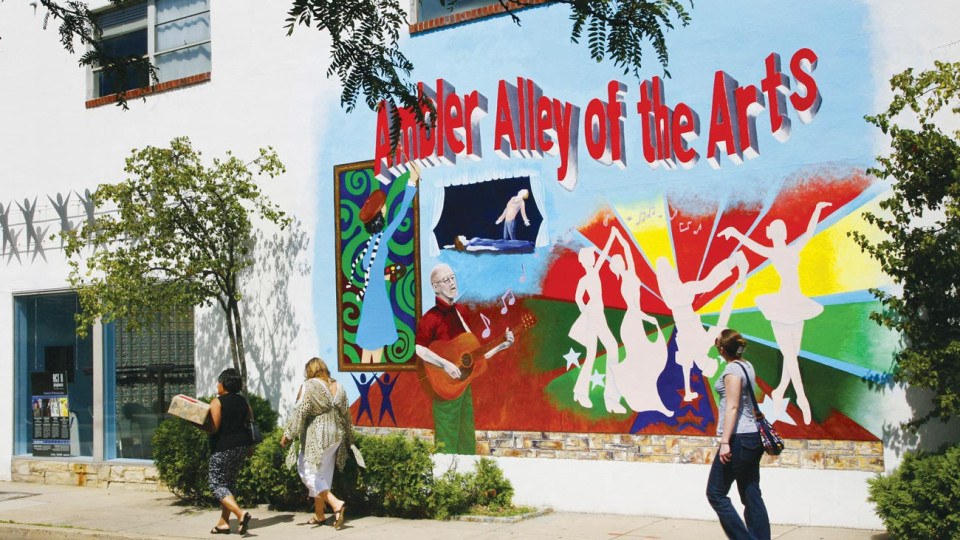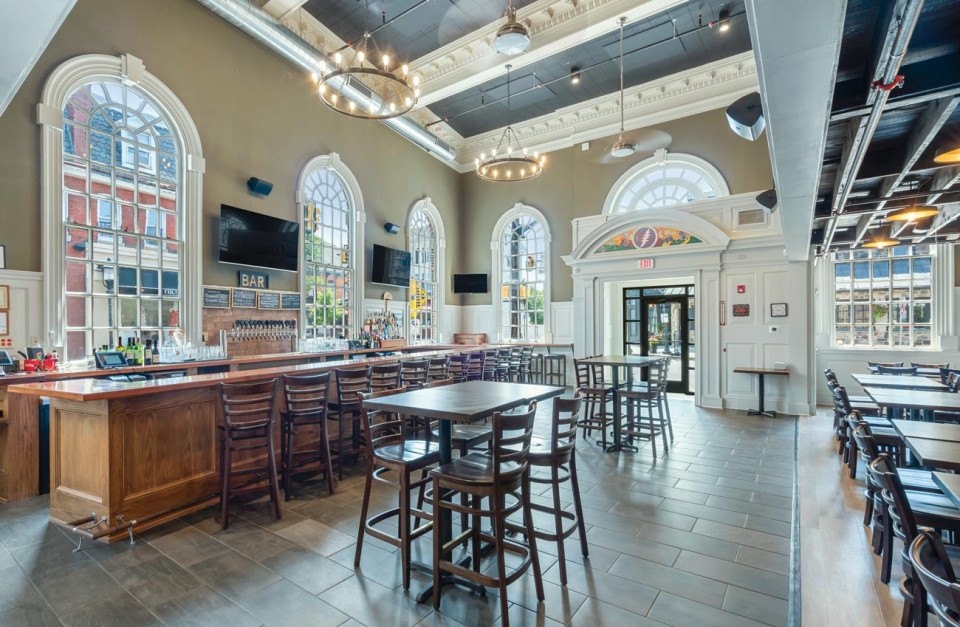Living in Ambler: A Neighborhood Guide
This compact borough has moved from an industrial past into a cultured present.

The Ambler Theater / Photograph by Dylan Eddinger/Visit Valley Forge
Born of a Heroic Act
Today’s Ambler traces its roots to 1716, when William and George Harmer purchased a 408-acre tract along the Wissahickon Creek from William Penn. The waters of the creek and a stream that flowed into it powered mills and a tannery in the village of Wissahickon from the 1700s onward, but a mid-19th-century tragedy gave the community its name: When two trains collided head-on near the village’s train station in 1856, killing at least 59 and injuring many more, Mary Ambler rushed medical supplies to the site and turned her house into a temporary hospital. The North Penn Railroad rechristened the station in her honor in 1869, and when the borough was incorporated in 1888, it also took her name.
From Industry to Artistry

An Alley of the Arts mural in Ambler / Photograph by R. Kennedy/Visit Philadelphia
Ambler has become a center of culture, cuisine and commerce, all packed into a seven-block stretch of its main drag, Butler Avenue. On it, you’ll find the Act II Playhouse (56 East Butler Avenue), a professional theater company, and the Ambler Theater (108 East Butler Avenue), a Spanish Colonial Revival structure designed by Philip Harrison for Warner Bros. in 1928. (Harrison also built the Bryn Mawr and Lansdowne theaters.) In addition to showing art-house films, the theater occasionally hosts Ambler Symphony performances. And for one weekend each June, Butler Avenue turns into a giant gallery and venue during the Ambler Arts & Music Festival.
Shop, Snack and Sip

Harry’s Taproom / Photograph by Linda McManus
Butler Avenue’s eclectic stores include Primitive Boutique (upcycled women’s clothing and decor; 103 East Butler Avenue), Studio Ambler (home design; 16 East Butler Avenue), and Swaddle (children’s items; 18 East Butler Avenue). After shopping, grab a bite at La Provence, a French restaurant in the old train station at 27 West Butler Pike; Geronimo’s Peruvian Cuisine, at 131-A East Butler Avenue; or Harry’s Taproom, in a former bank at 1 West Butler Avenue. You can also make your own wine at Stone & Key Cellars (57 East Butler Avenue) or visit Karamoor Estate, a working vineyard and winery in nearby Blue Bell (6118 Butler Pike).
Resurgence With a Vengeance

Maxim Shtraus of RE/MAX Elite, who lives near Ambler, says the borough is an example of a suburban small-town boom sweeping the country: “People who no longer want to be in crowded big cities still love the vibe where they can walk out of their house to a park, a restaurant or a shop.” This means demand for housing in Ambler has outstripped supply and will likely continue to do so. People moving to the Philadelphia area from less affordable places, he continues, add fuel to the fire.
Published as “Living in Ambler” in the March 2024 issue of Philadelphia magazine.


